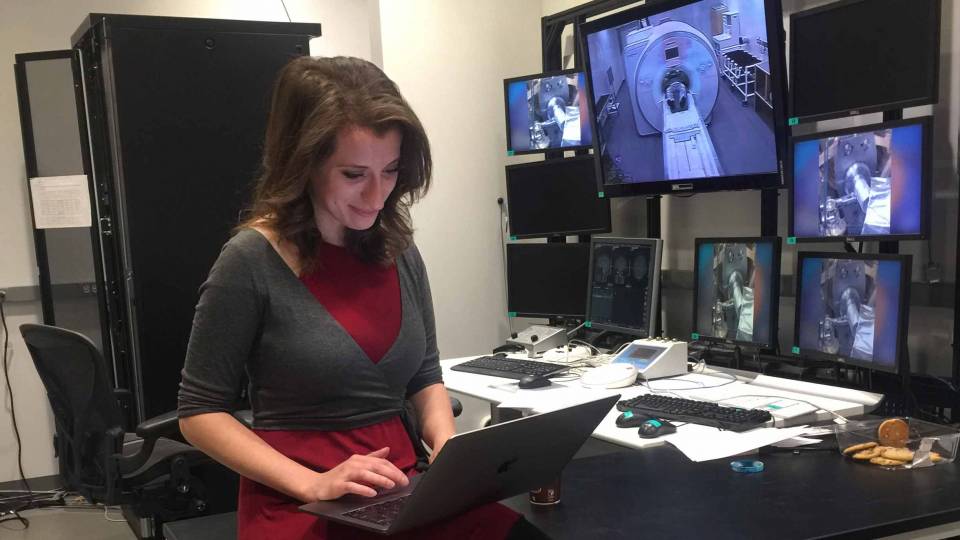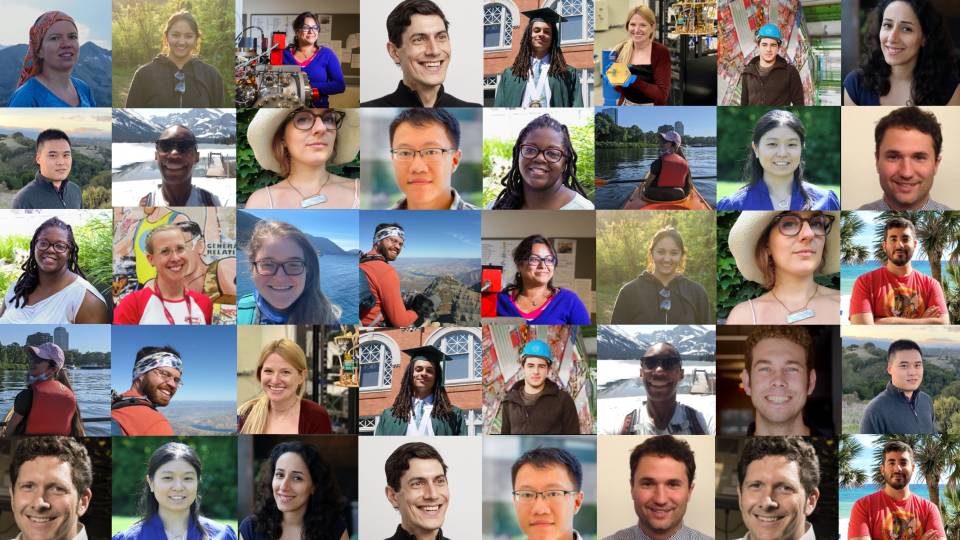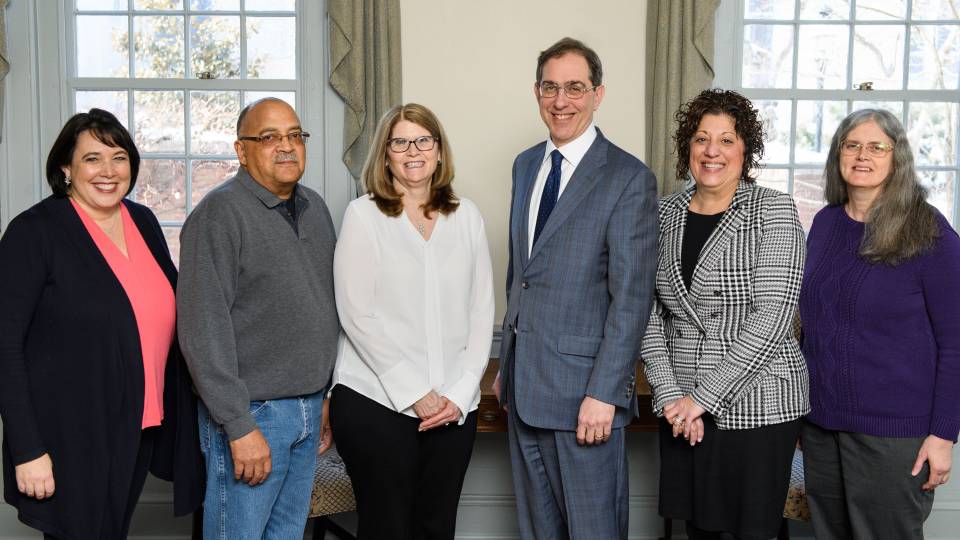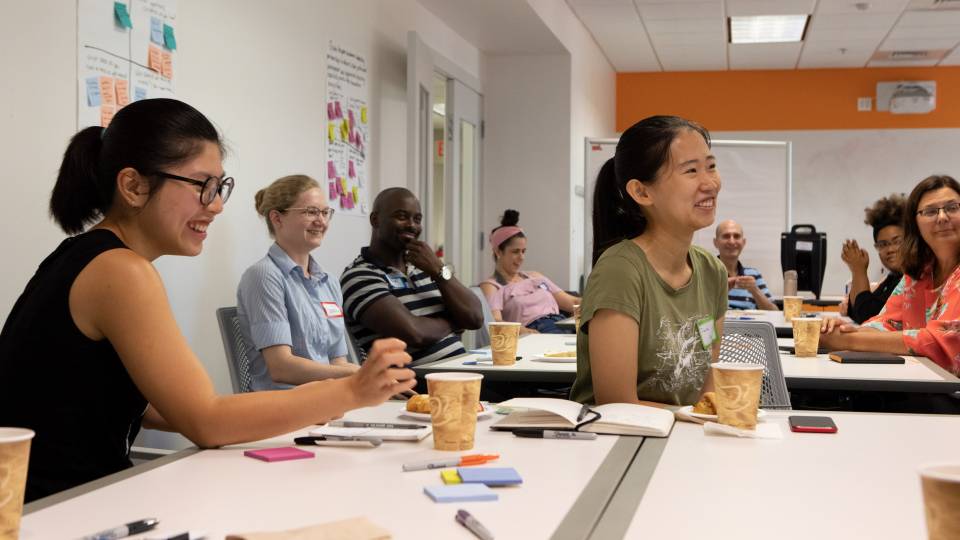It might seem counterintuitive, but even at a place like Princeton, what you know isn’t the sole determinant of success. For exam-level problems in STEM and other quantitative courses at a high level, subject knowledge can get you only so far.
What is critical — the real key to success — is understanding how to approach problems.

“Princeton courses demand students take their knowledge and apply it creatively,” said Nic Voge, senior associate director for the Undergraduate Learning Program in the McGraw Center for Teaching and Learning. “Can you take certain tools, conceptual frameworks, ways of solving problems and apply them to solve novel problems?”
This summer, 51 students spent their Wednesday evenings in the McGraw Center’s STEM+ Academy(Link is external) analyzing their study habits and their learning practice, and developing creative approaches to solving the unfamiliar, complex problems they would encounter in Princeton’s STEM courses this fall and beyond.
Thinking like an expert
“What a Princeton education uniquely does is it teaches people how to think like an expert, solve problems like an expert, approach problems like an expert,” Voge said. “And so that is a pretty specific challenge. If you’re going to be successful as a student at Princeton, you need to learn how to do that.”
What separates an expert problem-solver from a novice(Link is external) is the approach: Experts think beyond the surface, they don’t give up right away, they evaluate their own process, and they look for connections in the material.
Incoming students have very different preparation for approaching STEM problems, often depending on where they attended high school, Voge said. While problem-solving skills are built into some Princeton courses, there often isn’t enough time for professors to support this skill-building.
McGraw offers its STEM+ Academy outside of the regular curriculum and only between semesters. This summer was the third time Voge has led a cohort of students in the STEM+ Academy together with Colleen Richardson, assistant director of the Undergraduate Learning Program at the McGraw Center.
Strategies for every step
The students explored various strategies for tackling each component of STEM courses: how to take notes, how to study, how to get the most from lectures and precepts, how to approach problem sets, and how to prepare for and take exams.
Carolina Pavlik, a sophomore majoring in molecular biology, said she decided to join the STEM+ Academy after realizing the study and problem-solving methods that she learned in her small California high school were no longer helping her to advance in her coursework.
“I felt like in a lot of my classes, I was putting in a lot of effort, a lot of time studying, and for the amount of effort and time I put into each class, I wasn’t getting the kind of results that should equate to that kind of work,” she said.
Pavlik soon realized it wasn’t how much work she put in, but how she was doing the work. She learned that reading presentation slides ahead of a lecture could help her to ask better questions in class, that many kinds of preparation are sometimes needed before a lesson or test, and that each step can be completed in a specific order to be most effective.
The same is true for actions taken after an exam(Link is external). Rather than looking at your grade and tossing aside an exam booklet, it’s helpful to evaluate the test. Did you correctly anticipate the problems? What mistakes did you make, and were they avoidable? Had you clearly understood the main concepts?
Thinking through what to do both in the run-up to a test and afterwards “made me realize that a lot of my study habits were misplaced,” Pavlik said.
Applying techniques, adopting a mindset
In addition to completing weekly assignments, the students met as a group, then broke off into smaller groups to discuss how best to apply the cognitive techniques being shared by Voge and Richardson.
By the end of the STEM+ Academy, each student put together their own how-to guide specifically prepared for a course they would take this fall. That might look very different based on personal preferences, skills and strengths, as well as the students’ courses and majors, which include all four academic divisions.
Voge said in addition to helping students develop classroom practices, the STEM+ Academy also addresses mindset. It is important, for instance, that students struggling with a problem or exam realize it’s largely a matter of preparation and approach. “We want people to understand the difficulties they’re encountering as not being attributable to their inherent abilities,” he said.
“When they’re sitting down to solve a problem on an exam, they will have a very different mindset after participating in the academy because they’ve prepared differently,” he said.



